Everything you need to know about Korean cosmetics | K-Beauty File
✨ There's no better place to talk about Korean skincare than here on our blog coreebeauty.com !
Korean skincare is often considered the best in the world : inherited from the traditions of Korean women, it is based around a 10-step routine, adapted to each skin type. 💧
And the effects, both dermatologically and cosmetically, are both powerful and incredibly pleasant.
The world of K-beauty is simply fascinating. It holds the beauty secrets of Eastern women , as well as a philosophy of self-care that can transform more than just your skin: it can also positively impact your daily life. 🌸
By reading our guide to the end, you'll understand that Korean cosmetics isn't just a series of steps to follow.
It is in reality a real ritual , an ancestral art , and above all a damn effective way of taking care of yourself... in depth.
Ready to dive into the world of K-beauty? 🧖♀️
What if your skin finally regained the radiance it deserves?
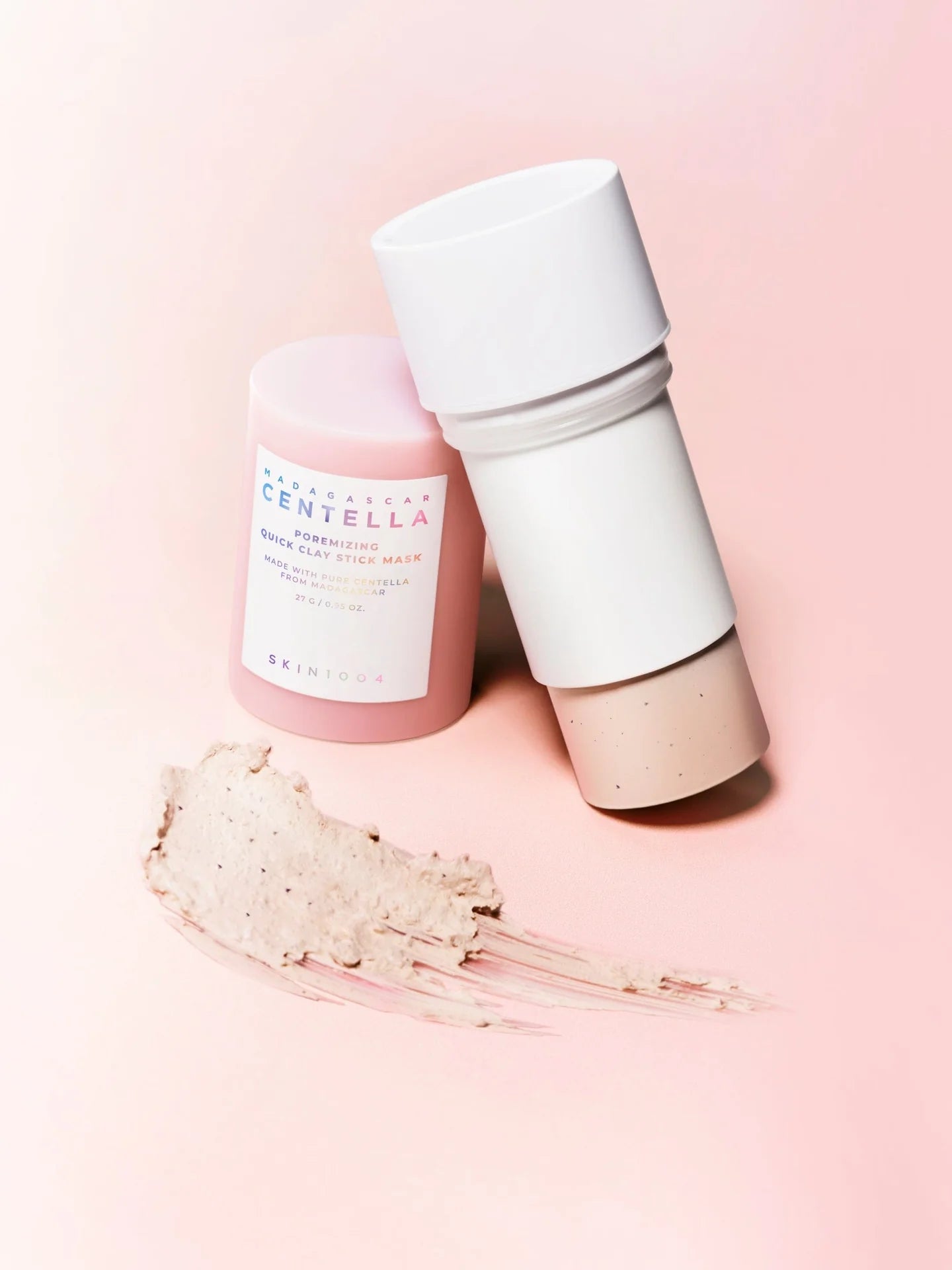
Part 1: History of K-beauty
In recent years, it's not just K-pop and K-drama that have won the hearts of thousands of fans. South Korea has also literally conquered the West with its high-quality cosmetic products. We're all familiar with K-beauty by now, but do you know when this beauty ritual was born? Have you ever wondered?
Korean cosmetics in history
Korean cosmetics first appeared during the Three Kingdoms period, specifically during the Silla reign. The first to use them were the Hwarang warrior-poets , known for both their exploits… and their beauty! 🌿
At that time, Koreans believed that physical appearance reflected the inner soul , which explains the importance given to skin care for centuries.
The Goryeo Dynasty (918–1392) marked a turning point for cosmetics. The opening up to international trade allowed the arrival of new ingredients and techniques . Among the most widely used products were:
– castor oil and cloves to perfume and soften the hair,
– Indian beans rich in saponin to cleanse the skin,
– apricot or peach oil to brighten the complexion . ✨
As today, fair skin was already highly sought after.
During the Joseon Dynasty (1392–1897) — (a little nod to the Beauty of Joseon brand 😉) — various techniques were used to lighten the complexion: ginseng baths, creams made from millet , peach blossoms or even pumpkin seeds .
The 20th century saw the appearance in Korea of the very first mass-produced cosmetic product: Bakgabun , also known as Park Powder . It was a translucent powder… but unfortunately rich in lead, which led to its rapid withdrawal from the market.
In the 1960s, the Korean government banned foreign products , giving a boost to the local industry. The result? Korean cosmetics were able to develop freely and gain in excellence , becoming a global benchmark.
Finally, it's impossible not to mention the cult product of K-beauty: the BB cream . First invented in Germany, it was perfected in Korea . Brands like Sulwhasoo , The Face Shop or Etude House have popularized it worldwide, making this tinted treatment a real springboard for the entire Korean beauty industry. 🌸
But why Korea? What makes these products so special?
🔍 The secret to Korean cosmetics? The ingredients.
As Hyram , a famous skincare YouTuber, says so well, the real power of Korean skincare lies in its natural and innovative ingredients .
Among the most emblematic, we find:
– snail slime ,
– Centella Asiatica ,
– propolis ,
– birch extract ,
…and many more, all chosen for their unique skin benefits. ✨
This attention to detail, this refinement , this exceptional quality have elevated cosmetics to the rank of a true cultural pillar in Korea.
Today, K-beauty has become an essential component of the famous Korean Wave 🌊 which is spreading throughout the world.
🎯 But enough about history!
Now let's get down to business , because that's probably what interests you the most, right? 😄
Protect your skin today with tested and approved skincare.
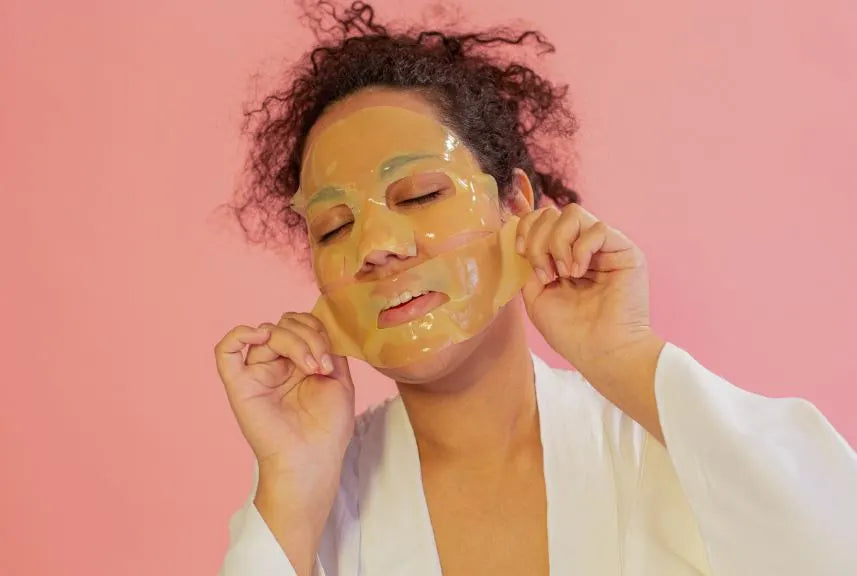
Part 2: How to know your facial skin type
You've probably heard of skin types before, but what exactly are they? In this blog, we'll discuss how to determine your skin type and what ingredients and products to look for. Let's get started!
1. The different skin types
Knowing your skin type is essential to creating a personalized beauty routine and achieving the best results.
In this new section, we'll help you understand your facial skin type. No matter what beauty product you choose to use, these tips will be helpful.
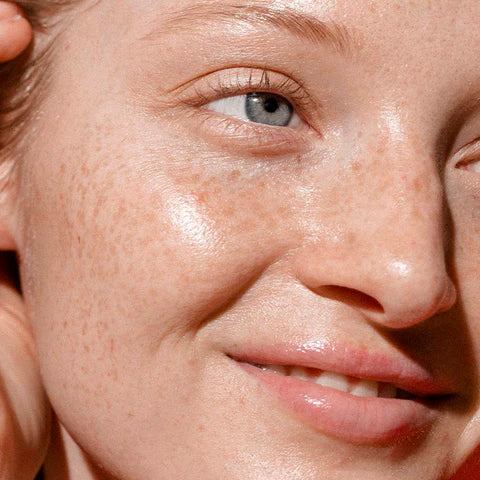
Normal skin
This is the type of skin we would all like to have, but almost
none of us has. With a rosy and luminous complexion, she does not present
no particular imperfections. It is well lubricated and well
hydrated. It's practically perfect skin, which is however rare to
adulthood and more common in children.
Normal skin solution

Dry skin
Dry skin has a dull, lackluster appearance. It feels
rough, not very elastic, often chapped. It becomes irritated and reddens
easily and rarely presents pimples or blackheads.
due to the low water and lipid content of the outermost layers
superficial parts of the epidermis, dry skin is more exposed to
environmental aggressions (sun, cold and intense heat, wind).
For this reason, it tends to age more quickly than
other skin types.
Dry skin solution
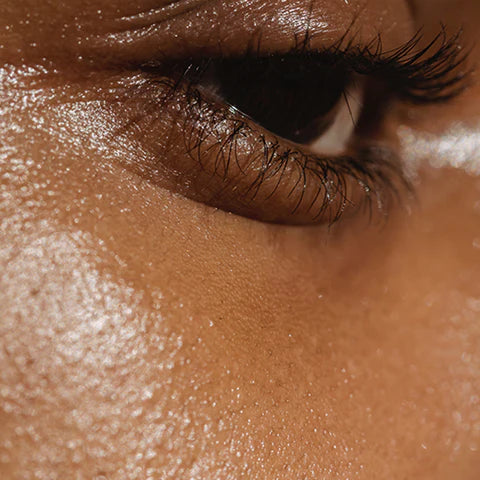
Oily skin
Oily skin is shiny, oily and smooth to the touch. It is
rich in sebum on the entire surface of the face, not just in the
T-zone. It has pimples and impurities to the naked eye. It has a
advantage over other skin types: it ages more slowly
thanks to the sebum which protects it.
Oily skin
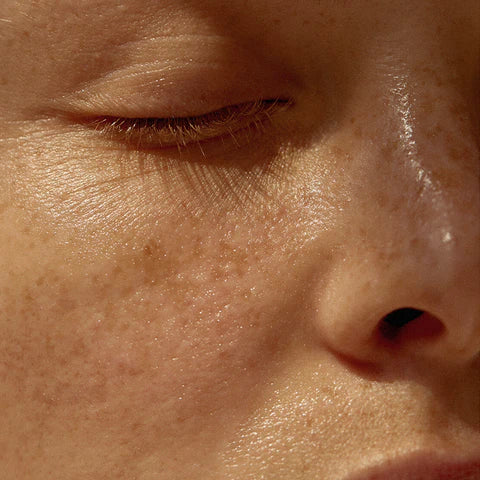
Combination skin
Combination skin is skin that doesn't want for anything. It's a mix
between dry skin and oily skin. In the T-zone (forehead, nose,
chin), there is increased production of sebum, the pores are dilated
and blackheads often form, which then develop into pimples.
The cheek area, on the other hand, is quite dry.
Combination skin
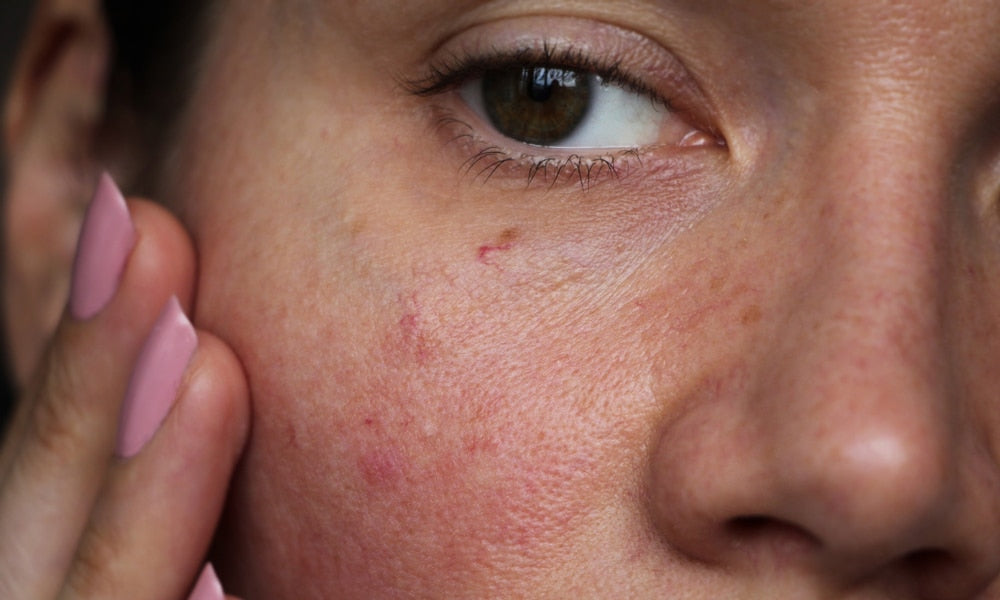
Sensitive skin
Sensitive skin is not a skin type, but a temporary condition or
permanent skin.
It is a skin that is very reactive to climatic variations, with low
tolerance to cosmetic products and water. It is fine, often
reddened and dry.
Have you managed to recognize your skin type? If you still have
If you have any doubts, try this quick test that I explain below.
Sensitive skin
2. Understand your skin type with a test
• Remove makeup and wash your face with a gentle cleanser.
• Gently pat your face with a towel and wait about an hour without applying any product.
• Pass a tissue over the different areas of your face.
• If the tissue stays dry, your skin is normal.
• If the tissue is dry but the skin feels tight, you have dry skin.
• If the tissue on the T-zone shows traces of oil, but not on the cheeks, you have combination skin.
• If the tissue shows traces of grease on both the T-zone and the cheeks, you have oily skin.
The guide is good but results are better !
3. The most common skin problems
The skin is the largest organ in the human body , and its condition can vary greatly from person to person. Skin problems are a major aesthetic concern and can affect not only physical appearance but also a person's confidence. The main types of skin problems include:
• Acne : This is a natural skin condition and therefore very common. Acne is caused by hair follicles clogged with sebum, dead skin cells and bacteria. This condition leads to the formation of pimples, blackheads and whiteheads, which can vary in severity.
• Scars : Scars can be caused by various factors such as acne itself, injuries, surgeries, or other skin damage. They can be visible and permanent, affecting the texture and appearance of the skin.
• Skin spots : Spots can appear as hyperpigmentation (darker areas of skin) or hypochromia (lighter areas of skin). These color variations can be due to sun damage, skin inflammation, or conditions such as melasma.
• Rosacea : This is a chronic skin condition that causes persistent redness, visible vascularity, and sometimes pustules on the face. Rosacea can cause physical and social discomfort for those who suffer from it.
• Wrinkles : Impossible to escape, it is also the most common skin problem because it affects absolutely everyone.
• Psoriasis : This is an autoimmune disease that manifests as thick, red, scaly patches of skin that are often itchy and painful.
• Dull complexion : The skin appears dull, lifeless and tired. A dull complexion can be caused by many factors, the main ones being: low oxygenation of tissues, stress, smoking, pollution, age, poor diet, etc.
Now that you know your skin type and the main skin problems encountered in dermato-cosmetics, you are ready (or ready, we don't forget Monsieur) to take care of it with the best ingredients developed in k-beauty and available on our store. Beauty advice : On our site, you will find high-quality k-beauty cosmetics adapted to each skin type. We can also advise you to help you make your choice.
Part 3: The main active ingredients in Korean cosmetics
Korean cosmetics mainly focus on preventing skin care problems.
This preventive approach pays particular attention to natural ingredients, traditional techniques passed down from generation to generation and technological innovations in contemporary cosmetics.
1. Green tea: An ally for sensitive skin
Green tea is a key ingredient in Korean skincare, in fact, it's found in many (or almost all) product formulations. A star ingredient, rich in antioxidants that fight free radicals, and highly valued for its formula stability and effectiveness, it's an excellent ally for sensitive, redness-prone, and acne-prone skin. You can enjoy the benefits of this ingredient in all its forms, whether it's a toner, cream, or balm.
2. Niacinamide: One ingredient, multiple properties
This is a very important ingredient in Korean skincare with multiple properties. In addition to controlling sebum production, it's also excellent for maintaining skin hydration, protecting the skin barrier, and brightening the complexion. Its stability in products allows us to use it in all its forms, and for daily use, it's generally very popular in serum form.
3. Ceramides: A stronger skin barrier and better hydration
Ceramides are highly regarded in Korean skincare routines. They are an extraordinary ingredient for maintaining skin moisture and strengthening the skin barrier, keeping external aggressors at bay. They are an excellent anti-aging ingredient for keeping skin elastic and firm, reducing and preventing the signs of aging. Ceramides are found in many skincare products such as masks, which are excellent for rehydrating the face and eye contours, and toners like Skin1004 Madagascar Centella Toner.
4. Ginseng: Used since ancient times for healthy skin
It has been used in Korea since ancient times for its skincare benefits. Ginseng is also known as the "root of long life" due to its energizing qualities and remarkable ability to reduce the signs of skin aging. Applied topically, it improves circulation, allowing for increased production of natural collagen and therefore a reduction in the signs of aging. In Korea, ginseng is a treasured skincare ingredient, but it also represents history and tradition. Many products contain this historic ingredient, such as Beauty of Joseon's Ginseng Essence Water and Missha Airy Fit Sheet Mask Red Ginseng , two popular Korean skincare products.
5. Centella asiatica: Super soothing
This is perhaps the most famous ingredient of all when it comes to Korean skincare. A hero for sensitive and irritated skin, Centella (or Cica) is highly regarded for its soothing, restorative, and anti-redness properties. If you have hypersensitive skin, an impaired skin barrier, acne, or irritation, this ingredient is for you! Centella can be blended with an infinite number of ingredients, which is why it's widely used in practically every formulation, including our current favorites Mixsoon Soondy Centella Asiatica Essence and the ultra-gentle Beauty Of Joseon Green Plum Refreshing Cleanser .
Special offer : Free delivery for orders over CHF 39. Free delivery to Switzerland, Luxembourg, Zurich, Basel, Geneva, and all cantons.
6. Rice: A powerful antioxidant for the skin
This grain, a staple of the Asian diet, has long played an important role in Korean and Japanese cosmetic traditions (think, for example, of using rice water for hair). This is due to its multiple benefits. Thanks to its content of ferulic acid and allantoin, two compounds with lightening properties, rice has the ability to brighten and even out skin tone. These two ingredients act gently on the skin, helping to visibly reduce dark spots and give the complexion a brighter, more even appearance.
7. Vitamin C: Your protection against redness
Vitamin C is a powerful anti-aging ally. In its pure form, ascorbic acid is the best-known antioxidant ingredient used in Korean cosmetics in particular.
This water-soluble vitamin cannot be produced by our bodies. In fact, vitamin C must be absorbed through food or applied topically with cosmetics. This is precisely why K-Beauty cosmetics enriched with vitamin C are widely used.
8. Collagen: The Anti-Aging Power of K-Beauty
Collagen is already present in our bodies in very large quantities. This protein substance makes up 90% of our skin and is also present in all connective tissues. It is responsible for the tone of not only the skin, but also the muscles. A dream, isn't it? However, be careful what happens after the age of 25. Collagen production decreases with age. We're talking about a decline of 1% per year. The results of all this will be the inevitable appearance of the first expression lines and the gradual loss of skin tone, more visible pores, and uneven skin texture. In Korean aesthetic medicine, collagen is used primarily as a filler. Its role is to support the skin, thanks to its cord-like structure, which tends to support our dermis, giving it tone and smoothness.
9. Aloe Vera: essential trace elements and amino acids
This mostly transparent gel is extracted from the leaves of the aloe plant. Highly rich in minerals, antioxidants, and vitamin C, it helps calm irritated skin, soothe inflammation, and provide deep hydration. Perfect for spring, when skin is more prone to climate change and humidity, aloe vera is a popular ingredient in K-beauty face masks and creams.
10. Retinol: The best anti-acne solution
Before incorporating it into your K-beauty skincare routine, it's helpful to understand this ingredient, which is often misunderstood as too harsh. Nothing could be further from the truth: you just need to use it correctly to fully reap its recognized benefits.
Retinol is a fat-soluble vitamin. More specifically, it's a derivative of vitamin A or retinoic acid and is part of the retinoid family. This substance stimulates cell renewal, has an exfoliating effect, is smoothing, acts on blemishes, and fights acne with spectacular effectiveness. Of course, all these key ingredients of Korean cosmetics can be found among the best k-beauty brands and in our store.
Part 4: The Best K-Beauty Brands in 2025
Here we've gathered eight K-Beauty brands renowned for their high-quality products and innovative approach. If you want results, the best of Korean cosmetics is right here. All the products featured in the photos above can be found directly in our online store.
1. Beauty of Joseon
Korean cosmetics brand Beauty of Joseon has ancient roots. This brand brilliantly interprets the tradition of Joseon women with a modern vision, creating Korean skincare products that embrace the simplicity of nature.
2. MEDICUBE
Life-transforming innovation, beyond skincare. This is what the brand stands for. Medicube's goal is to tackle various skin concerns by harmoniously combining ingredients and new formulas, always finding the best solutions for each of us. Medicube collaborates with dermatologists to research and develop innovative products using the finest ingredients. The brand maintains high standards of durability and stability, a commitment to better skin.
3. Skin1004
SKIN1004 is a Korean cosmetics brand known for its careful selection of raw materials! To find virgin soil, they traveled to Madagascar, where Centella Asiatica grows, which the brand uses as a raw material for all its Korean skincare products!
4. Cosrx
Cosrx is one of the most innovative cosmetic companies when it comes to communicating the effectiveness of Korean skincare products. Cosrx is one of the most renowned Korean cosmetic companies due to its excellent, highly effective skincare products at a very affordable price. Although it is a major brand with global production, it does not forget its artisanal touch. Cosrx products contain a selection of natural ingredients, high-quality active ingredients, and formulations for all cosmetic needs.
5. ABIB
In Hebrew, Abib is the first month of the biblical year and also the peak ripening stage of barley, when the grains become rich in starch. Just as wheat reaches its peak of ripeness in the month of Abib, skin reaches its peak of strength and beauty with Abib cosmetics. Abib is inspired by hanbang, ancient Korean medicine, which uses herbs to offer products that slow skin aging and strengthen the skin. Abib Laboratories continually experiment with quality combinations, with minimalist formulations, design, and packaging, in harmony with nature.
6. ANUA
Treat your skin to comfort with Anua Korean cosmetics! This brand promises healthy beauty through a balanced lifestyle. A healthy lifestyle has a positive effect on appearance and well-being: healthy skin has fewer imperfections and fights the signs of aging more effectively; it will be brighter, more even, and more elastic. Anua has developed products with selected, vegan ingredients of organic origin and fully adheres to the Clean Beauty philosophy.
7. I'MFROM
“Nature as it is. That’s I’m From.” Two promises: ingredient transparency and no harmful additives! I’m From is one of the greenest Korean cosmetics brands, from the renowned cosmetics company Wishcompany (which also produces Klairs and By Wishtrend). I’m From takes care of the origin of raw materials, offers the effectiveness of natural extracts used almost in their pure form, and simple, targeted strategies for Korean skin care with special attention to problem skin.
8. Purito
Since 2012, Mr. Kim has been creating cosmetics with high-quality natural ingredients, free from parabens, sulfates, artificial fragrances and colors, and with recycled packaging that respects nature. Simplicity is the key to the success of this very young Korean brand, which has already won Western hearts! Purito completely avoids animal testing practices and donates a portion of its profits to the Best Friend Animal Society.
K-Beauty promises a multi-step beauty routine. It includes cleansing, moisturizing, nourishing, and meticulous skin protection, ensuring long-term healthy skin. The power of Korean cosmetics lies in the products, but it's also a unique practice.
Part 5: The 10 Steps of Korean Skincare
The Korean skincare routine is potentially suitable for all skin types, but everyone's skin is different, so it's important to keep this factor in mind before choosing which cosmetics to use. The golden rule for good results is consistency. Would you like to discover with us the steps of the Korean routine and the products from the best Made in Korea brands to use for each step? Then let's get started. There are several variations of the Korean routine, but generally, the most complete is the 10-step one. The basic principle is the layering of products—that is, the application of richer products over lighter ones—with the aim of achieving even, smooth, and soft skin that is perfectly hydrated and transparent, almost like crystal.
THE KOREAN SKINCARE ROUTINE IS DIVIDED IN 10 STEPS, SOME OF WHICH ARE FUNDAMENTAL AND DAILY
The routine we're proposing should be performed twice a day, morning and night, and the first four steps are fundamental. The following steps can be incorporated as you become more familiar with Korean products, especially those that are not yet widely used in the West, such as essences. While it may seem like an overly complex procedure, the 10-step Korean skincare routine takes an average of 15 to 20 minutes.
In case of dermatological problems, such as active acne, rosacea, dermatitis or psoriasis, it is always recommended to consult a specialist before introducing a new skincare routine.
#1 THE FIRST PRODUCT TO USE: CLEANSING OIL
The first step in a Korean skincare routine is to use a cleansing oil to remove all traces of makeup, sebum, and dirt. We're all familiar with double cleansing by now, so we won't dwell on its benefits any further. However, it's worth remembering that Korean women were the first to recognize its usefulness.
#2 WE PROCEED WITH THE FOAM CLEANSER
The second step is to use a foaming cleanser that removes residual impurities, such as sweat or pollution. At the end of the double cleanse, your skin will immediately appear fresher, and the feeling of cleanliness on your face will be invaluable. Double cleanse should be performed morning and night, but if you have sensitive skin, simply do it before going to bed at the end of the day. Formulas containing centella asiatica are excellent for delicate skin that tends to redden.
#3 THIRD STEP: FACIAL EXFOLIATION
The third step in the Korean skincare routine is facial exfoliation. According to some sources, it should be done every day, but it is generally recommended once or twice a week, especially if you have delicate skin. Ideally, you should alternate the use of a physical scrub, which acts by mechanical exfoliation, with a chemical peel (also called enzymatic). Enzymatic peels are best suited for sensitive skin. Once the dead skin cells have been removed, the cleansing treatment steps are complete, and you can begin the next steps with the treatment action.
#4 FACIAL TONIC PLAYS A FUNDAMENTAL ROLE
We often tend to underestimate it, but facial toner fulfills a very important function, one that is also recognized by Korean skincare. It removes any remaining sebum, makeup, and impurities and restores the skin's balance, preparing it to better absorb the products used subsequently. Korean toners are generally lighter than Western ones, as almost all are alcohol-free. The toner hydrates the skin and rebalances its pH. Simply dab it on the face with a cotton pad or, as Korean women do, with your fingers. It should be used every day, morning and night.
#5 FACIAL ESSENCE, ONE OF THE LEAST KNOWN KOREAN SKINCARE PRODUCTS
Now let's move on to the most "mysterious" of Korean products, or at least one of the least known, even though it's starting to become known in the West. This is the essence, not to be confused with the toner. Compared to the latter, the essence has a denser texture and serves to add an extra layer of hydration. We can recommend the product below, available in our store. But the choice is yours; there are many others. It has a watery texture but is characterized by a very high concentration of active ingredients. It performs specific treatment functions, such as firming or depigmenting, and acts as a "buffer" product between the toner and the serum. Girls, that's not all. Let's continue with the other steps of the Korean skincare routine.
#6 THE KOREAN SKINCARE ROUTINE CONTINUES WITH FACE SERUM
After the essence, we move on to the facial serum, which should be chosen according to your skin type. It should be used every day, morning and evening, and a few drops are enough to treat the entire face. The serum is the most targeted and specific product in the entire Korean skincare range, so it's important to find the one that best suits your needs. For example, those based on tea tree oil are very effective on combination or oily skin. You can also choose a "universal" serum based on hyaluronic acid.
#7 SHEET MASKS TO MEET THE NEEDS OF EVERY SKIN TYPE
Korean women use face masks almost every day. Their favorite are fabric masks: soaked in active ingredients, disposable, and convenient to use.
SHEET MASKS ARE A KOREAN SKINCARE ESSENTIAL Masks should also be chosen according to your skin type, and to reap the benefits, simply incorporate them into your routine 2 to 3 times a week. Convenient and affordable sheet mask kits are available online in our store, allowing you to try out several types of masks.
#8 NEVER FORGET EYE CREAM
The Korean skincare routine obviously doesn't neglect one of the most delicate areas of our face: the eye area. Korean women use eye creams, specific serums for this area, and eye patches every day, morning and night, to combat puffiness and dark circles thanks to their decongestant and brightening properties. Formulas containing bakuchiol, a gentle and natural alternative to retinol, are excellent for preventing wrinkles.
#9 FACE CREAM FOR EVEN MORE INTENSE HYDRATION
Korean skincare involves applying a facial moisturizer that not only hydrates and nourishes the skin, but also "seals" the previously applied products. Korean face creams create a kind of barrier effect that allows for quick and effective absorption of various skincare products, and also protects the skin from pollution and external aggressors. For combination or oily skin, it is best to choose what Korean women call a lotion, with a light and impalpable texture (usually in gel form).
#10 KOREAN SKINCARE ENDS WITH SUN PROTECTION FOR THE DAY, AND A NIGHT MASK BEFORE GOING TO SLEEP
And here we come to the final step, which is to use sunscreen during the day and a night mask at night. Sunscreen should be applied every day, at least in summer, and should have a high sun protection factor (SPF 50 or even SPF 50+).
Conclusion
Okay, ladies, that was our Korean skincare special, with lots of helpful tips on which products to use for each step and which ones to choose based on your skin type. As always, the floor is yours: did you already know the steps of the Korean skincare routine? Have you tried them yet?
Tell us in the comments on our Instagram , your experience is also very useful for all the readers (and readers, there are some) of our K-beauty blog.
Kisses from the entire Coreebeauty team!



